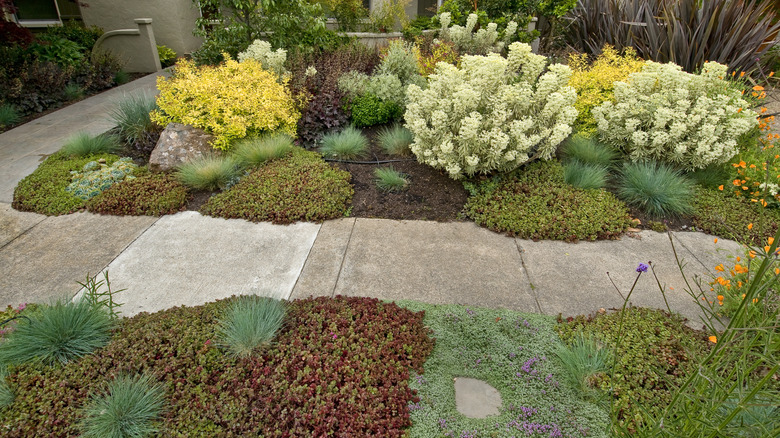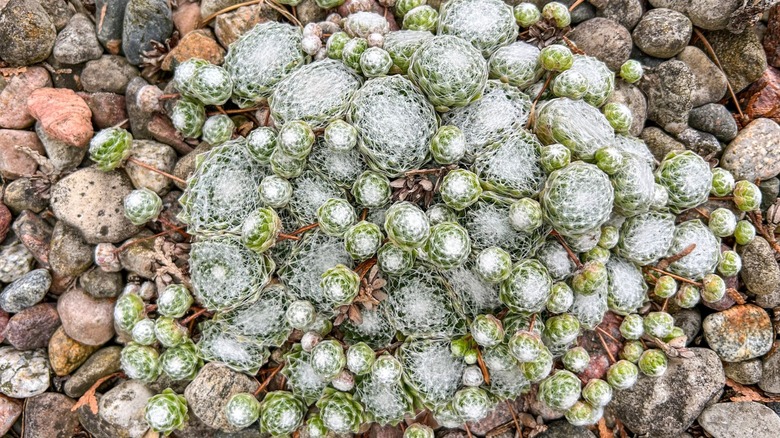The Spooky Perennial Succulent That Makes The Perfect Ground Cover
Cobwebs on plants raise gardeners' hackles. Is it spider mites? Or just icky eight-legged creatures getting too comfy on our growing things? Yet cobwebs are also a delightfully creepy and normal part of many succulents in the Sempervivum family. Cobweb hens and chicks (Sempervivum arachnoideum) is a drought-tolerant succulent that spreads through tightly-spaced pups that appear every year. A "hen" typically puts out several offsets (or "chicks") during the growing season.
Cobweb hens and chicks are not tough enough to walk on, but they make a long-lived ground cover that looks cool during spooky season (and all the other seasons, for that matter). What may be the coolest thing about cobweb hens and chicks is that it's hardy in zones 3 to 8 and can tolerate winter chills down to -15 degrees Fahrenheit. This native of the mountains in Europe and North Africa settles comfortably into soil that wouldn't nurture many other plants. Coarse, dry ground low in nutrients won't disappoint Sempervivum at all. Without a whole lot of help, this web-encased succulent is one evergreen ground cover that will deliver stunning color year round. It's also generally considered non-toxic to people and pets, though there's always a chance of some stomach upset or adverse reactions from accidental ingestion.
Planting and growing cobweb hens and chicks
You can plant cobweb hens and chicks at most times of the year other than in freezing or very high temperatures. A stretch of yard in full sun to part shade is prime territory for cobweb hens and chicks. A place that gets six hours or more of sun is ideal, but in warmer zones, the plants benefit from some protective afternoon shade. If the soil in that area holds onto excessive moisture, amend it with some succulent soil before planting.
Make planting holes just large enough for the root balls, and space them between 6 and 12 inches apart. Be sure to wear gloves while planting cobweb hens and chicks, since the plant can irritate the skin. Spread the roots out in the hole before backfilling, and make sure not to bury the plant too deeply. Edge the plant's base with a bit of gravel to help with drainage. Give your cobweb hens and chicks water regularly until they are well-established.
If you want to properly care for hens and chicks plants of any kind, water them when the soil gets dry during the growing season. Once winter arrives, the plants go dormant and won't need to be watered as frequently. Cobweb hens and chicks don't tend to need fertilizer. Each year, expect your plants to spread 2 to 3 feet in clusters about 3 inches high.

